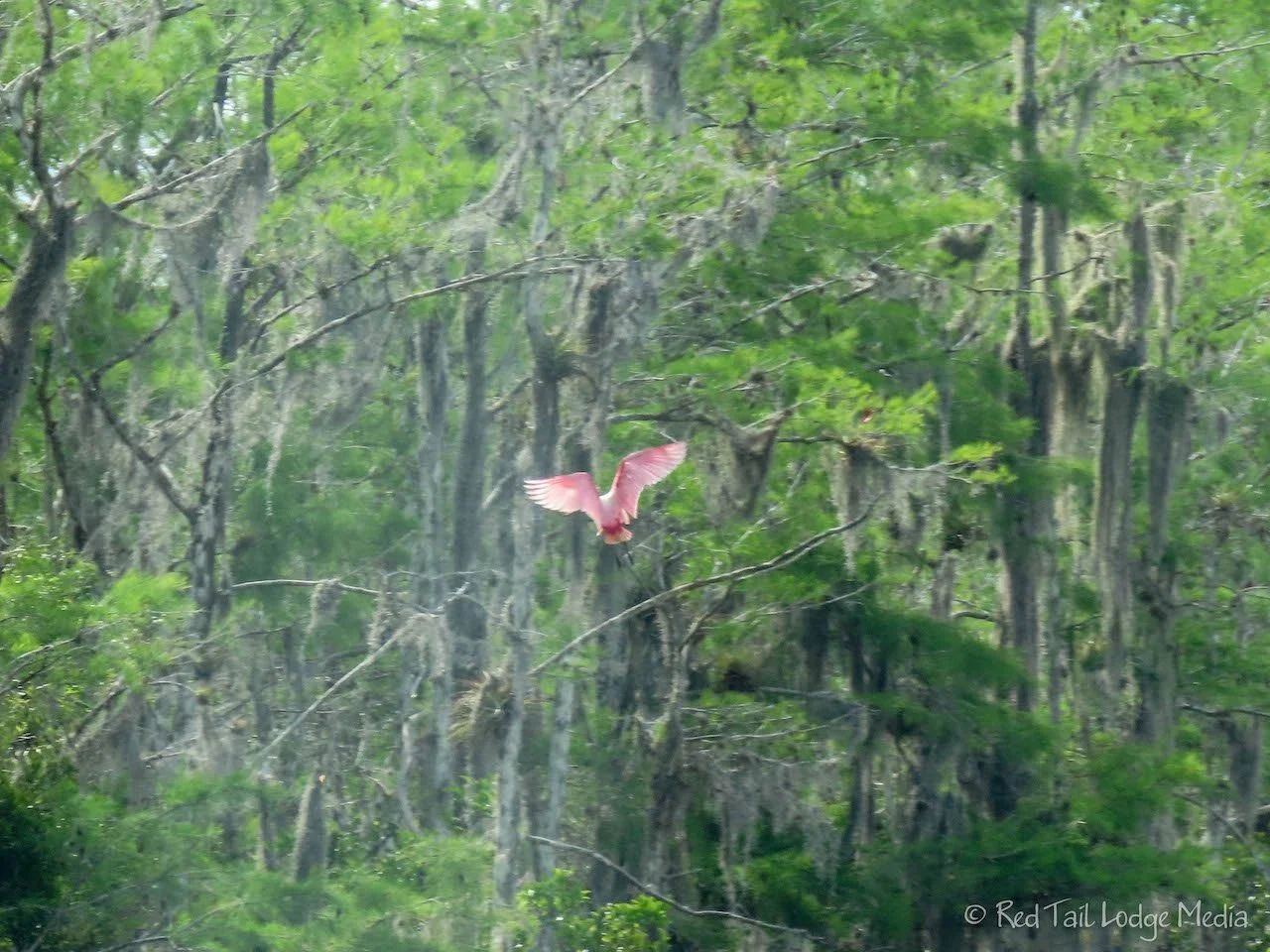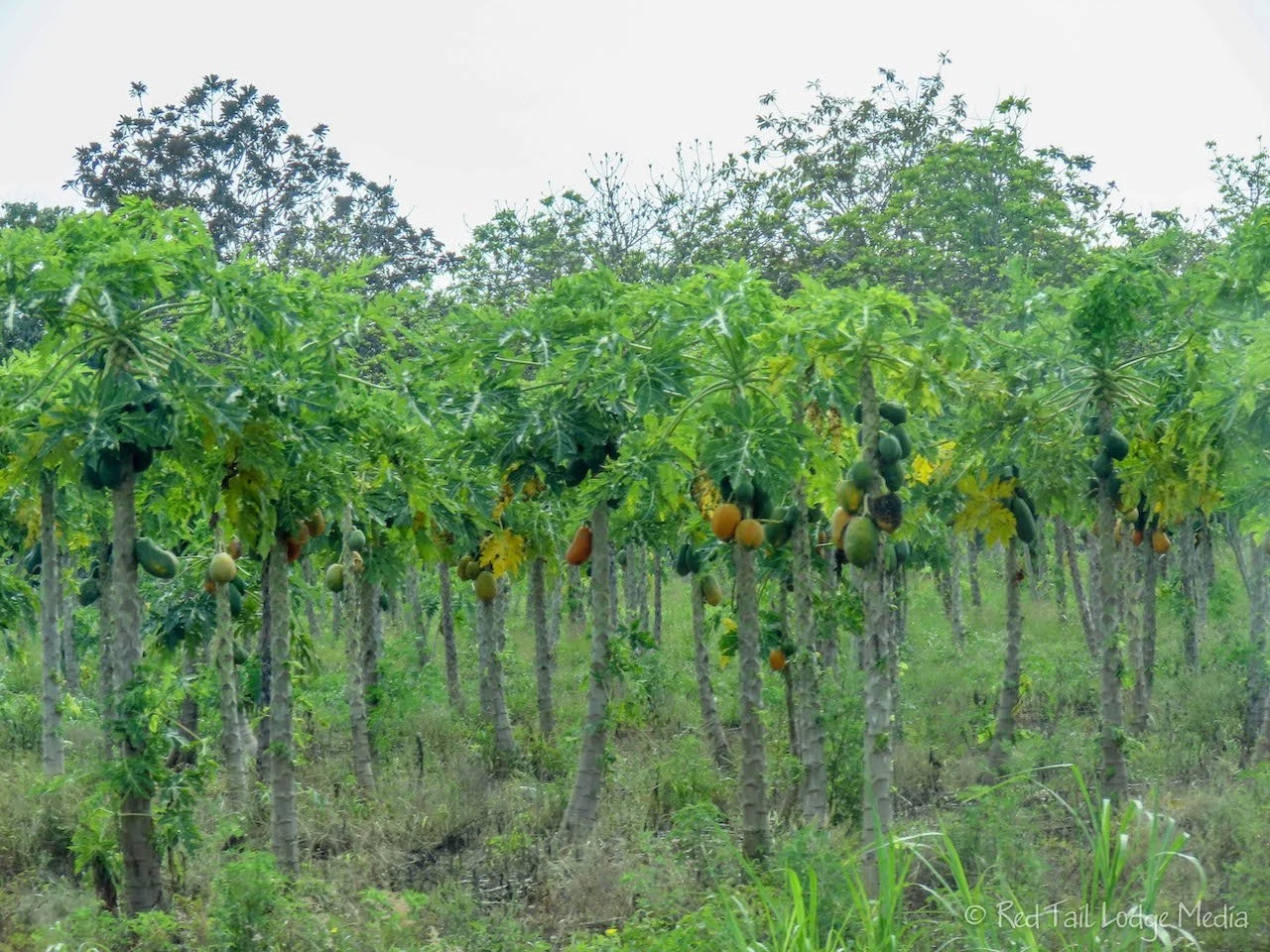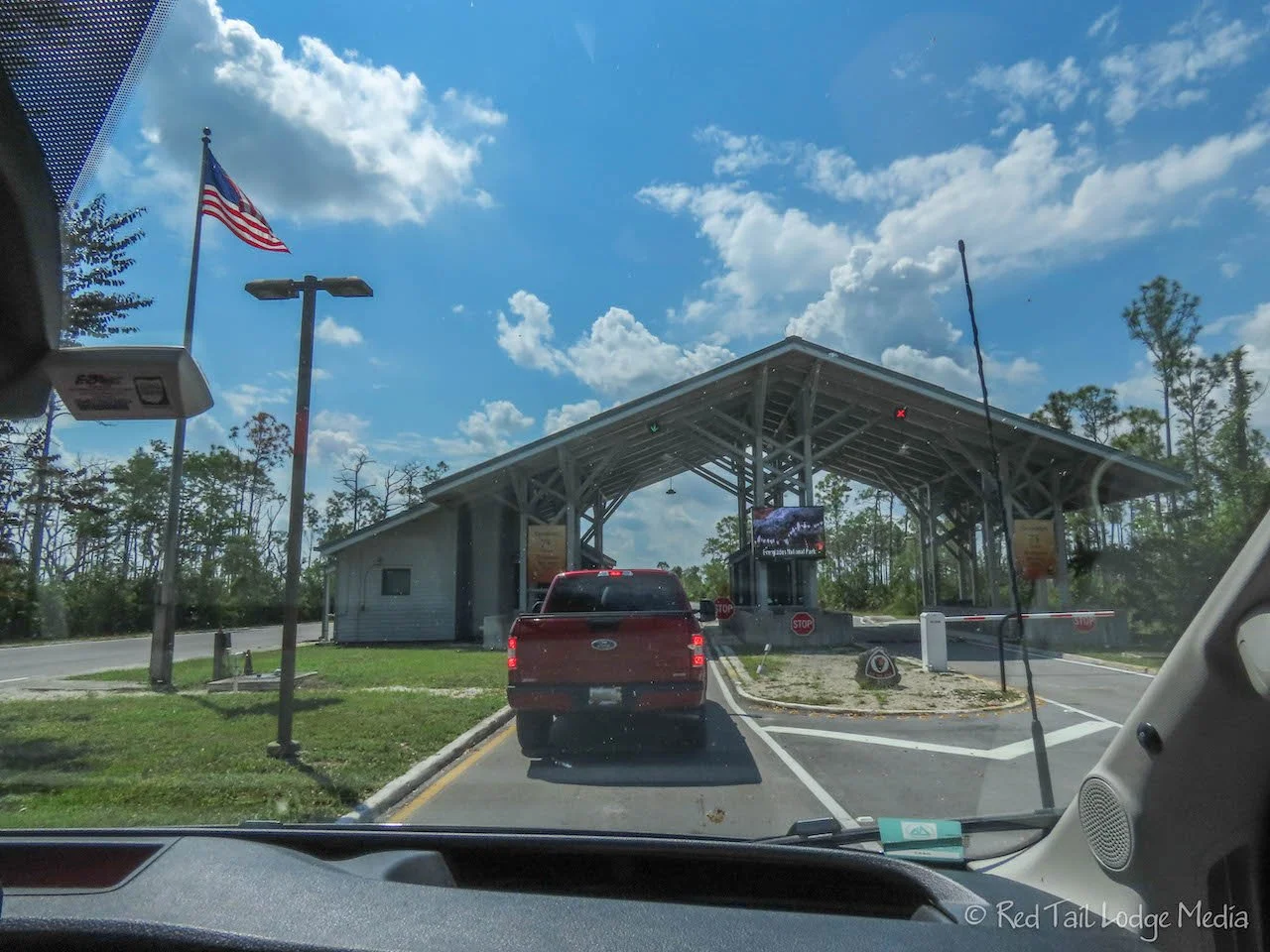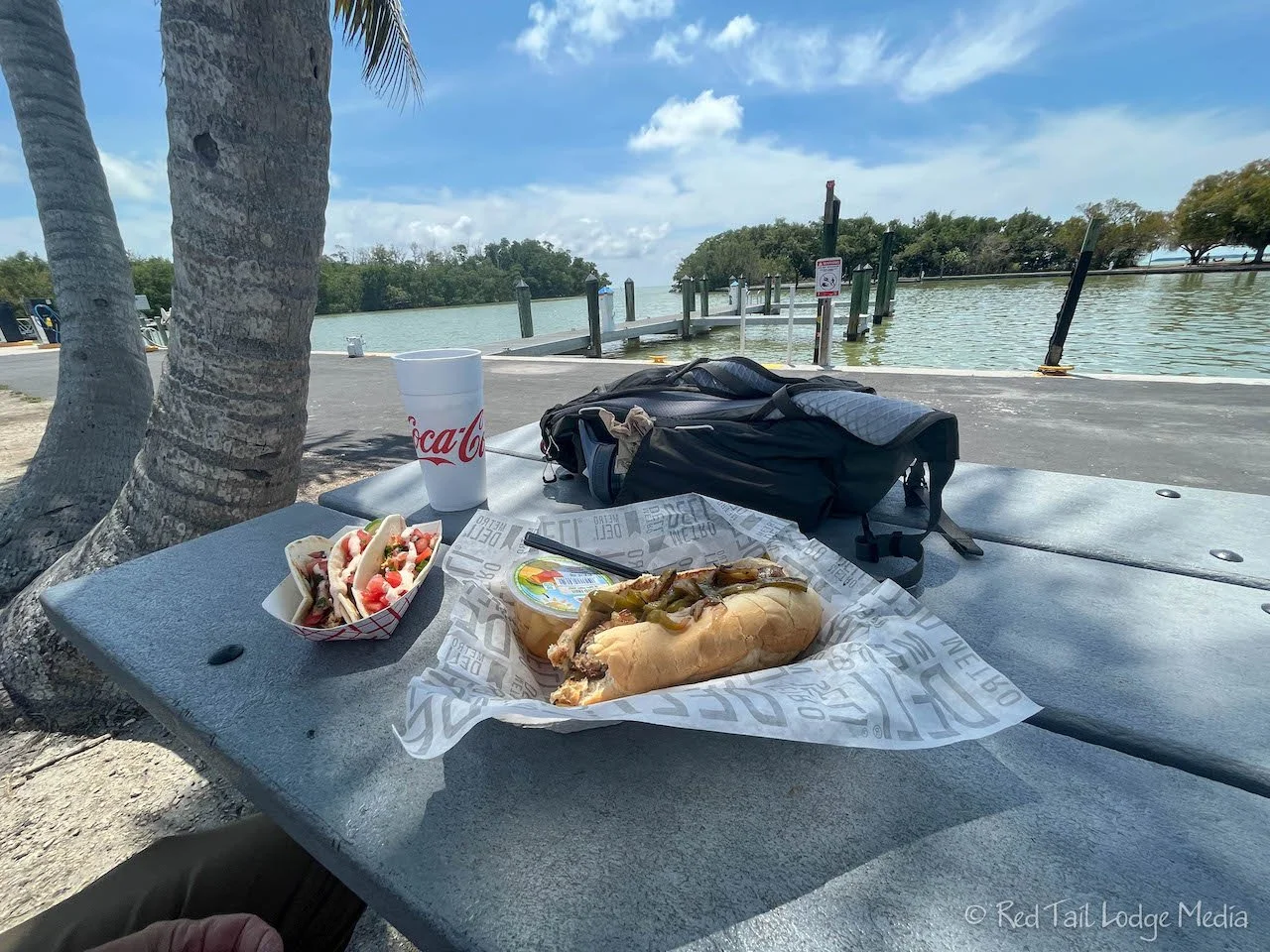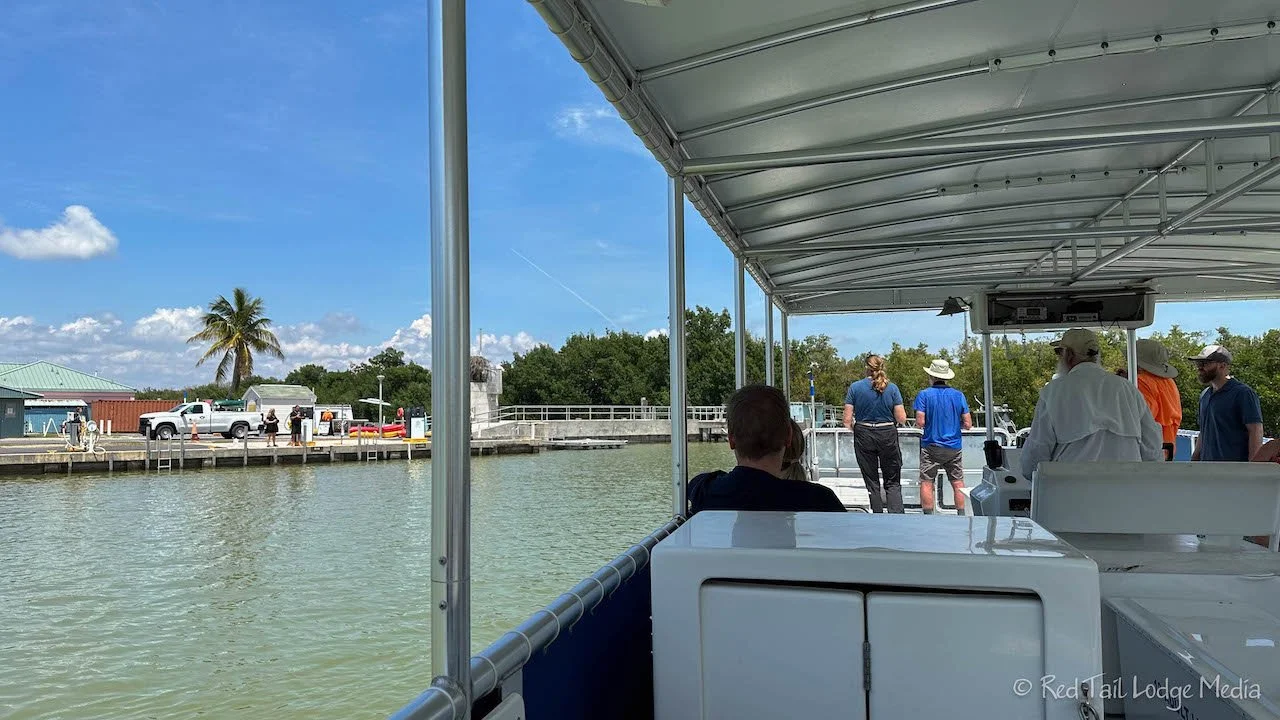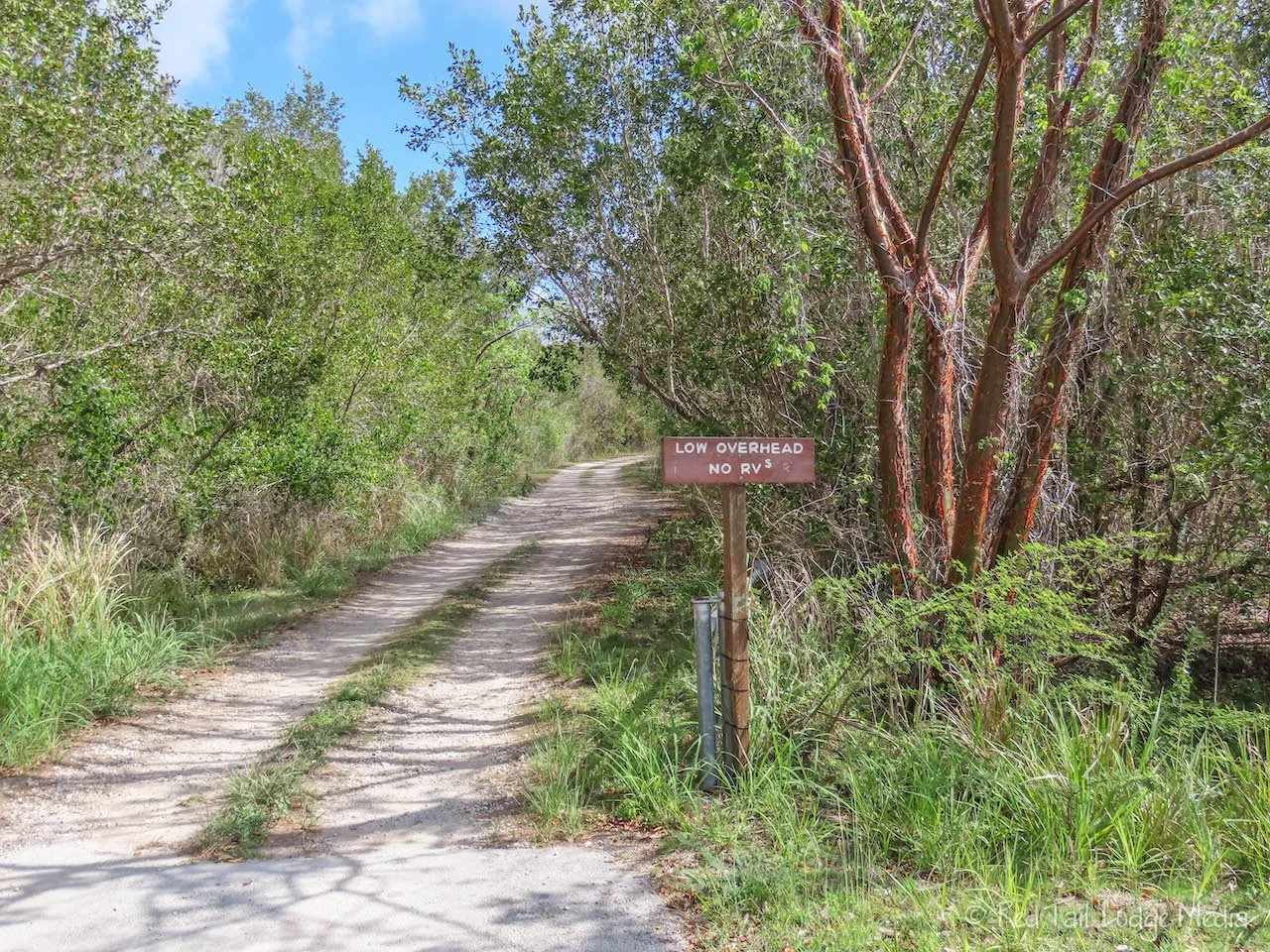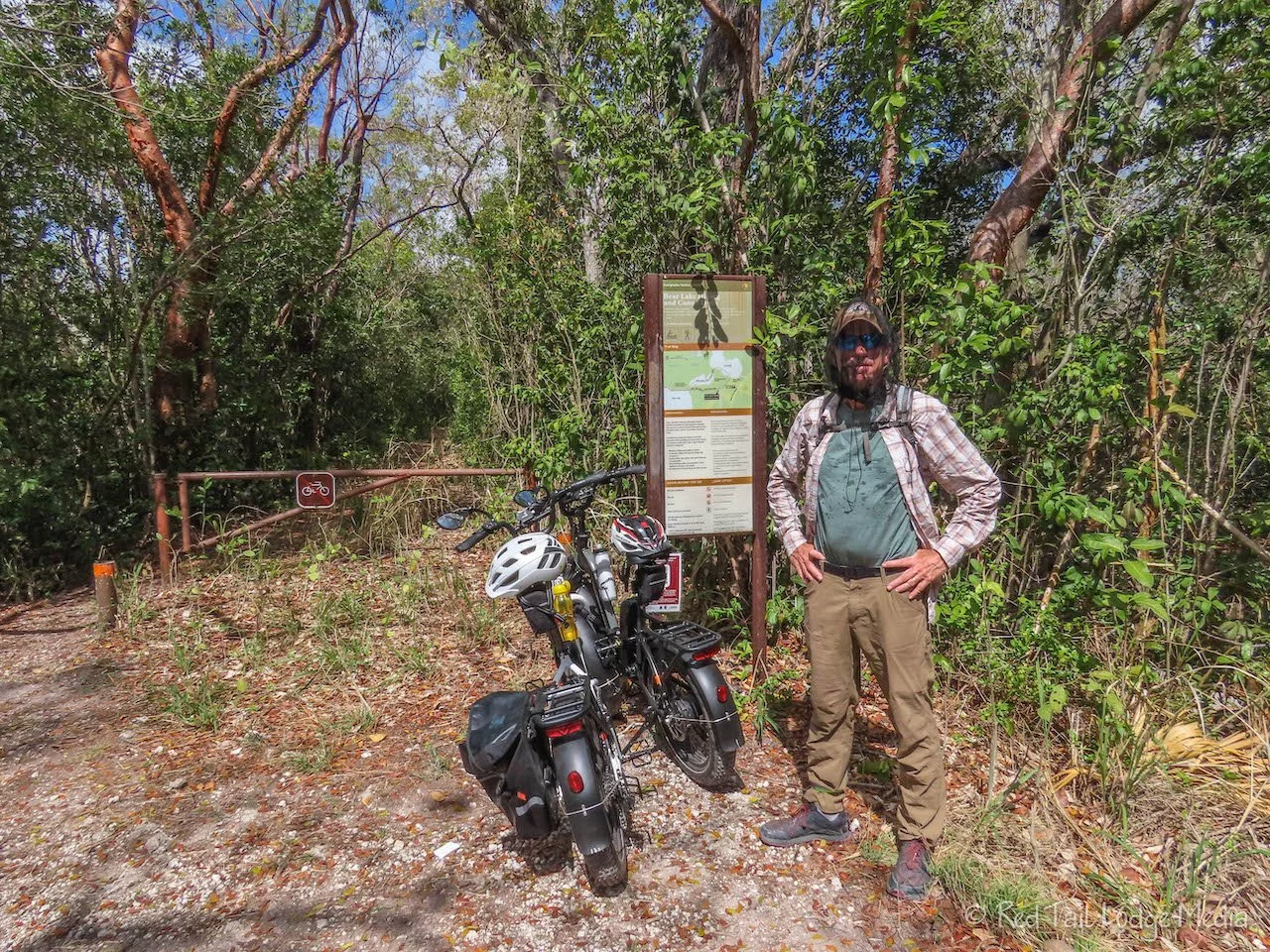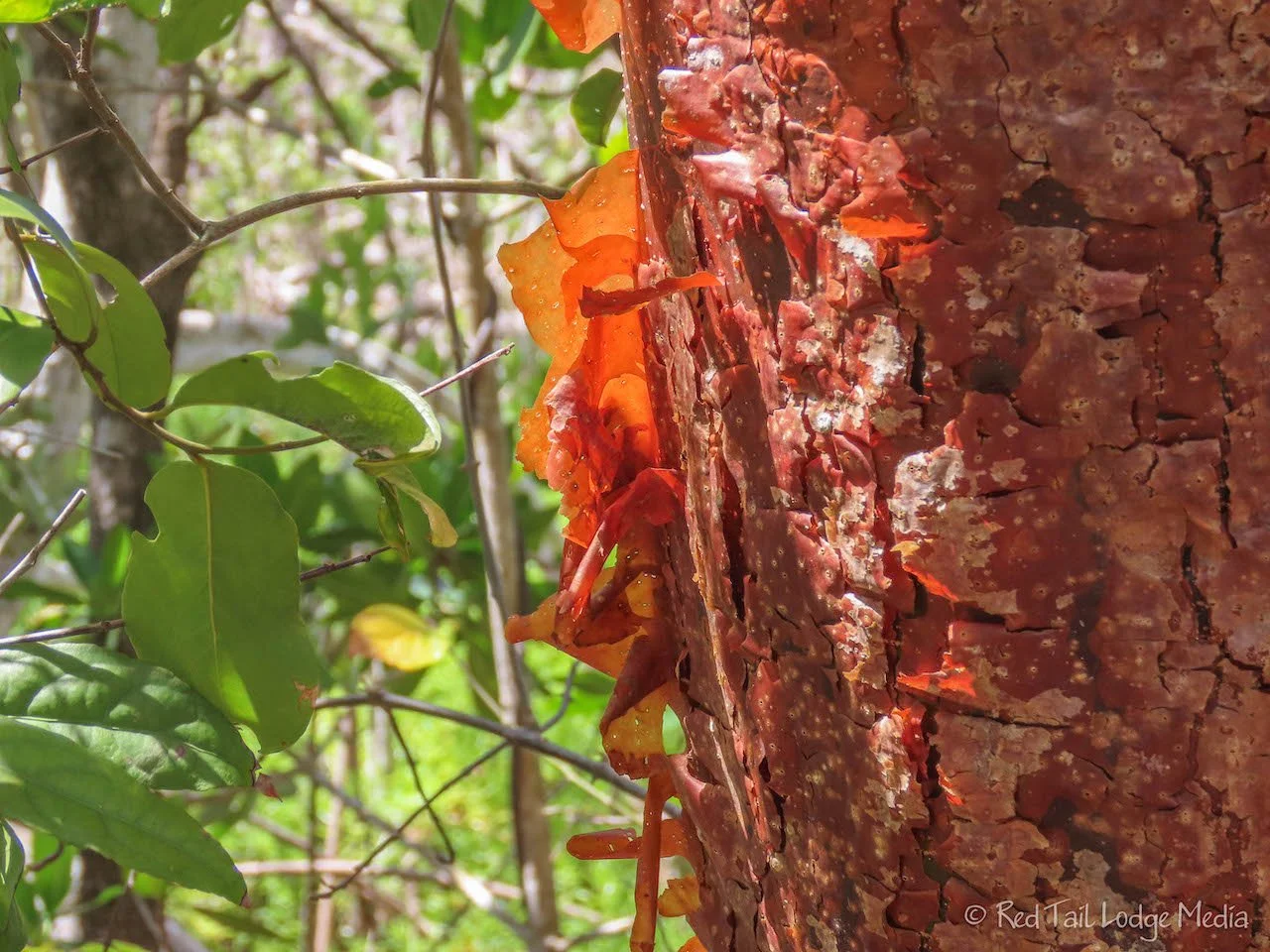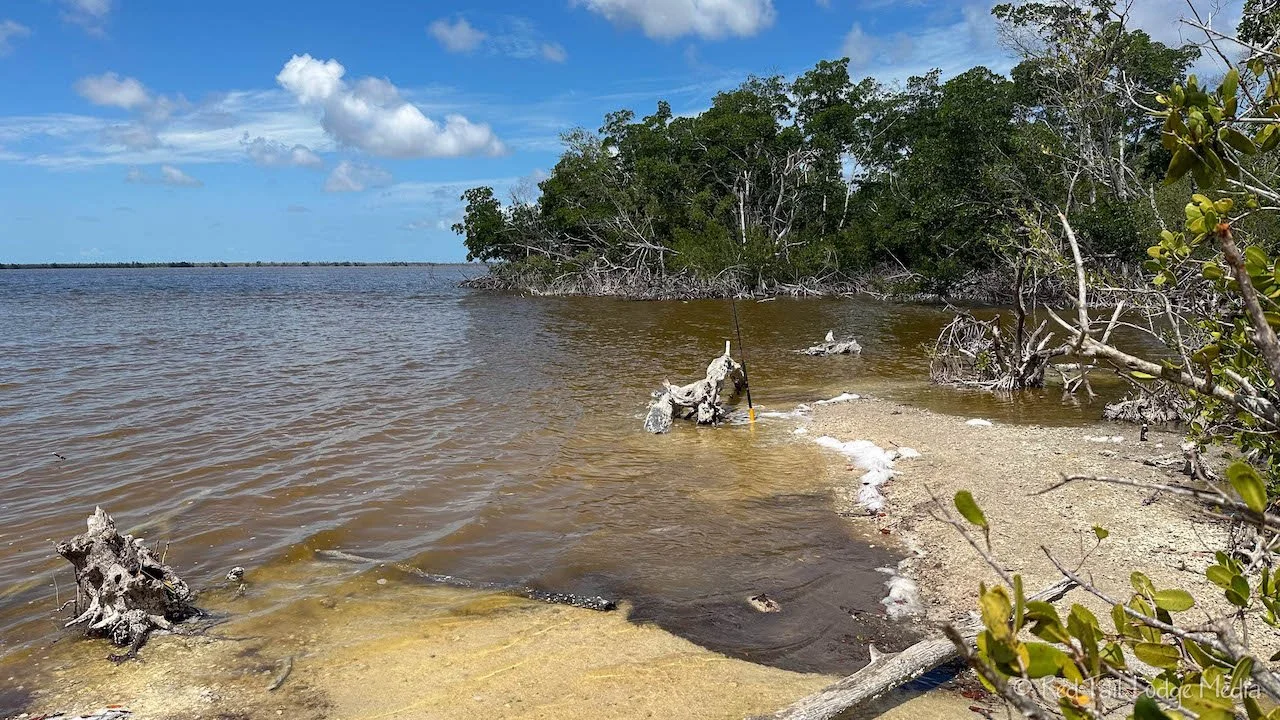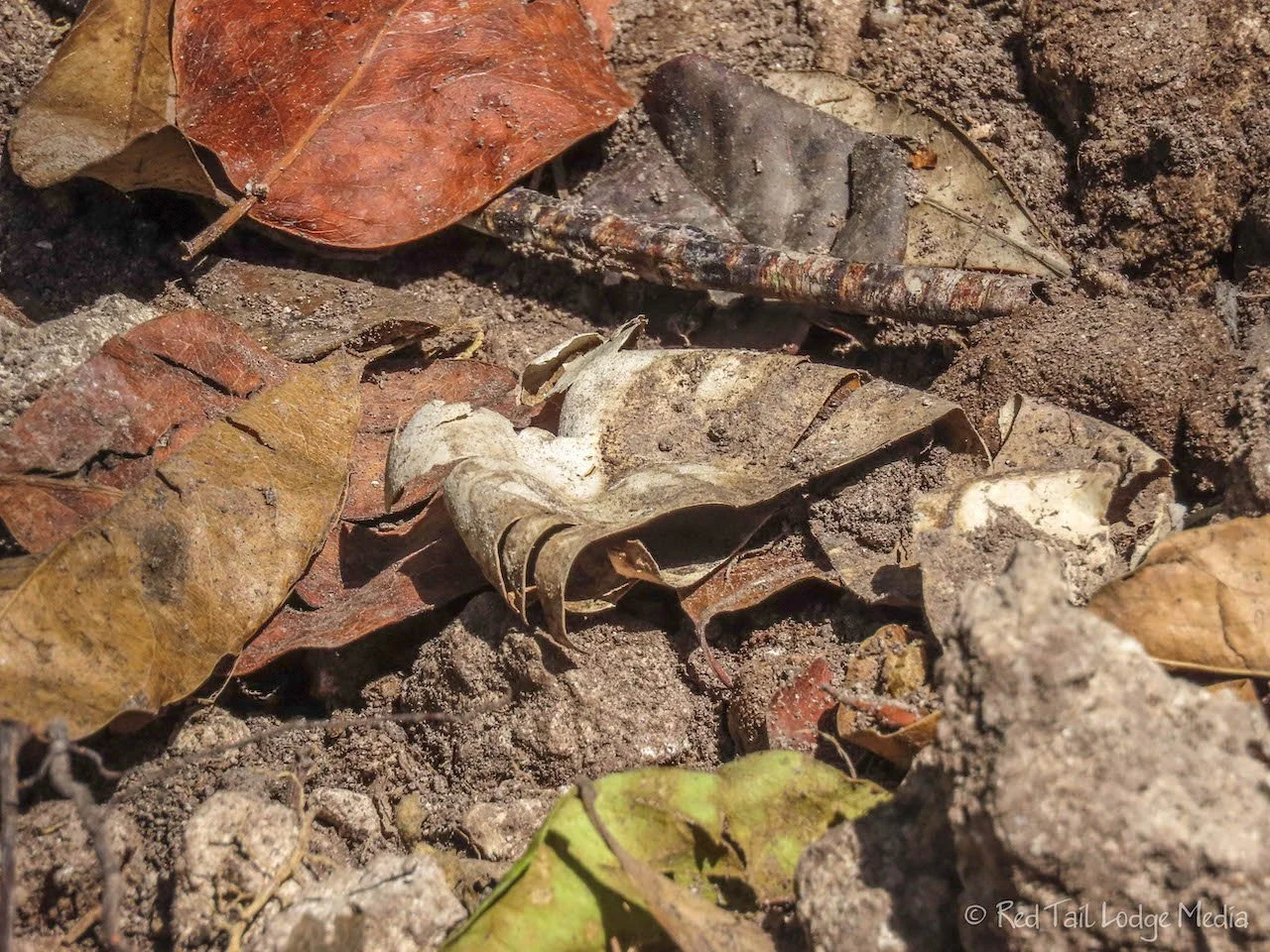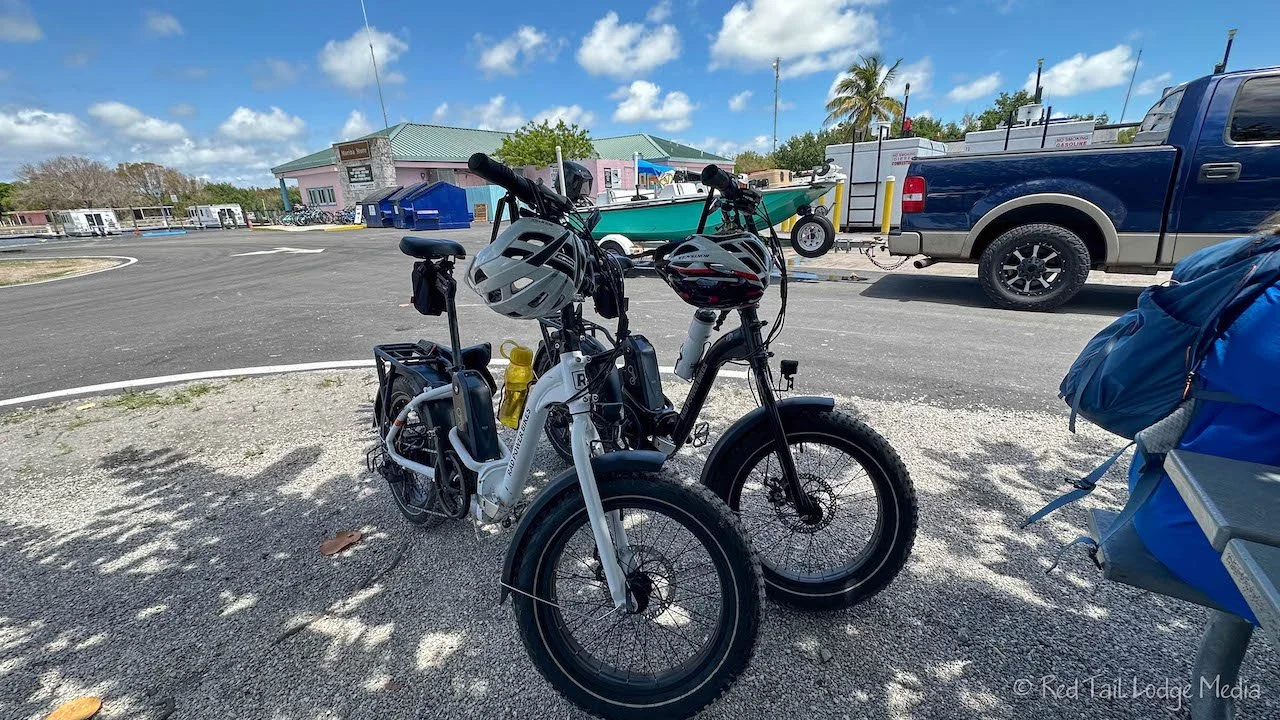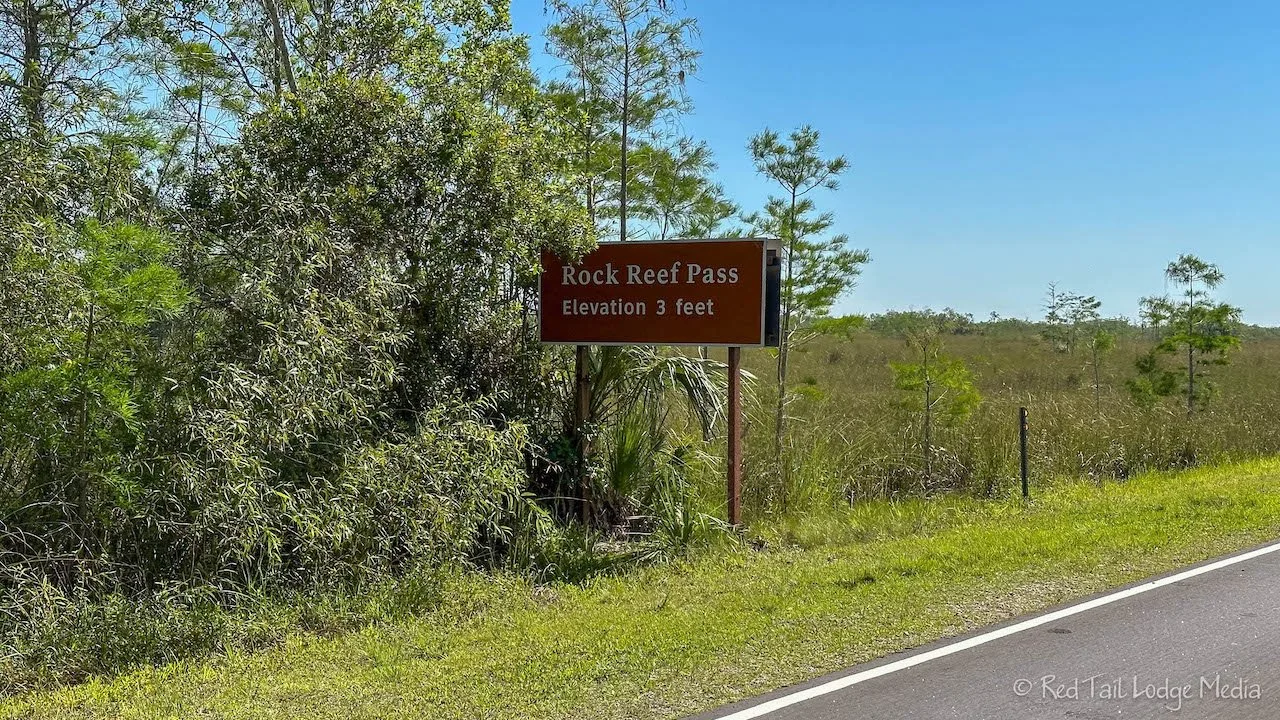Everglades National Park, Florida - April 13th to 17th, 2023
Before visiting the Everglades, we thought of it as a big swamp, but it is much more diverse than that. Technically, it is not even a swamp, since the water is constantly flowing, even if very slowly. There are six different ecosystems, each with different vegetation, from grasses and ferns, to tall trees. A variety of birds call this place home. And yes, there are also plenty of alligators and crocodiles.
Thursday was a travel day, from Monument Lake Campground in Big Cypress National Preserve to Flamingo Campground in Everglades National Park. We took our time getting there, taking care of chores along the way. First, we stopped at the Midway Campground in Big Cypress to dump. Monument Lake does not have a dump station, but we were allowed to use the one at Midway since we were camping in Big Cypress. We had dumped our cassette toilet in the pit toilets the previous day at Monument Lake, so we only needed to dump our gray tank.
When we texted our kids that we were on our way to Flamingo Campground, our daughter asked if there are flamingos there. No sooner did we receive that text, we spotted a pink bird flying alongside the highway, so Ann quickly snapped a picture of it. However, it turned out to be a rose-colored spoonbill, not a flamingo. Still a lovely bird. When we researched the flamingo, we learned that they were pretty much wiped out by the feather trade in the late 1800’s. However, there have been some sightings of flamingos in Florida since the 1950s. A flock of 147 flamingos were seen in 2015. (www.evergladesfoundation.org/post/the-floridian-flamingo). So yes, there are flamingos here, but we probably won’t see any.
In the town of Homestead, we stopped for groceries and a laundromat. We also stopped at a pawn shop, not that we were buying or selling anything, but that just happened to be an Amazon pick up location. We had ordered a few items online that we needed to pick up. The pawn shop was an interesting mix: guns, knives, designer handbags, and jewelry. The items we picked up were clamps (paid link) to fix the stretch net under the dinette bench, eyeglass sport straps (paid link), a pair of shorts for Keith, another bug zapper (paid link), a small DC fan (paid link), a better water filter (paid link) for under the sink, and a spring hose (paid link) with an adapter (paid link). The spring hose will replace the one that came with the EKKO. The new one can attach to the quick connect with the aid of the adapter, but it can also be used directly to a water hookup. This will allow us to take advantage of the higher water pressure of a water hookup while saving wear and tear on our water pump when we want to rinse off gear. One of our original bug zappers was not holding a charge for very long and didn’t seem that strong anymore.
As we entered the Everglades, we stopped at the visitor center to get information on what to do during our stay. The ranger recommended to stop at each of the six boardwalks, marked in red on the map, because they are each in different ecosystems. She also advised us on hiking and biking trails along with giving us some maps.
It was already late afternoon by this time, so we didn’t want to take too much time stopping on our drive out to Flamingo Campground. We chose to stop at the Mahogany Hammock boardwalk. The Eco Pond boardwalk is accessible from the campground and we’ll save West Pond for our drive back out. The other three, Pa-hay-okee, Pinelands, and Royal Palm are near Long Pine Key Campground, closer to the entrance of the park. We’ll be staying in Long Pine Campground after we return from the keys, so we’ll save those three boardwalks to do on our next visit.
The Mahogany Hammock is a short boardwalk around a tropical tree island. There are informational signs along the way. We learned that tree islands in the Everglades normally have a moat around them and this one was no exception. There was a large mahogany tree along with some strangler fig trees. We also saw some small fish with fluorescent blue tails, the same type we saw in Big Cypress at the Kirby Storter Roadside Park (Big Cypress National Preserve, Florida - April 8th to 13th, 2023).
Flamingo Campground is very large. The Trailer Loop, or T Loop, has some electric sites, which is what we reserved. After settling in, we turned on the AC. Temperatures were in the 90’s. The sites are rather exposed, but they are spacious, pull-thru sites. The bathhouses have showers, but they are only cold water showers in T Loop.
After dinner, we walked over to the amphitheater. We didn’t notice any bugs except for pesky flies that buzzed our heads and would bite. They seemed to bother Ann more than Keith. She must be sweeter tasting. Luckily, there were also plenty of birds flying around which kept Ann’s mind off the flies. After taking pictures of osprey, hawks, and pelicans, we returned to Red Tail (our Winnebago EKKO) for the night.
The temperatures cooled down by the time we went to bed that we turned off the air conditioner, opened the windows, and turned on a couple of small fans (including the new one) in addition to the MaxxAir roof van. We prefer the fresh air and sounds of nature while we sleep. However, we could feel bugs on us most of the night. Hopefully they were not no-see-ums. We’ll find out the next day if any welts appear on our bodies. Evidently, the screens on our EKKO do not keep out the tiny little bugs. Perhaps we’ll leave the AC on for the rest of our stay instead of opening up the windows.
Friday morning was our reservation for the backcountry boat tour. There are two boat tours that depart from the Flamingo Marina. The backcountry goes through the canals and inland bays, staying in the brackish waters lined with mangrove trees. The other boat tour heads out into the salty Florida Bay, out to a couple of mangrove keys. We were originally only going to take the one boat tour, but the couple from Massachusetts staying in the campsite next to ours recommended doing both. So we took the Florida Bay tour in the afternoon. We would also recommend taking both. The two tours are quite different from one another, but both have wonderful naturalist guides who gave us wonderful information on the plants, animals, and history of the area.
To get to the marina from the campground, we walked the one mile trail, the Guy Bradley Trail, from the amphitheater to the Flamingo Visitor Center. Along the way, we passed the Eco Tents which are available for rent, if you are into glamping. The trail follows right along the shore of Florida Bay. Also visible from the trail is the new lodge and restaurant being constructed from shipping containers. The containers sit up on concrete pillars, quite an unusual sight. They look like they should be pretty hurricane proof. The pink Flamingo Visitor Center is still closed. A temporary center is in a mobile structure nearby. The center has been under renovation since Hurricane Irma damaged its roof in 2017.
On the backcountry tour, we learned a lot about mangrove trees, the canals that were built and why, along with the plug that divides the marina between the salt water and the brackish water, artificially restoring the shoreline that was removed when the canal was built. About the only wildlife we saw were crocodiles and osprey, including the large osprey nest right at the marina.
Mitchell, our guide on the Florida Bay tour, had a very keen eye for spotting wildlife and identifying it from huge distances. We saw a large variety of birds and a couple little shark fins sticking up from the water. The water in Florida Bay, at least while we were there, is not very clear, so it was hard to see anything down into the water.
In between the two tours, we ate lunch from the food truck at the marina. Ann had an Italian sausage with peppers and onions with a fruit cup while Keith had the street taco trio, one pork, one chicken, and one mahi-mahi. Ann was hoping the fruit cup was fresh fruit, but it was a prepackaged one. At least is was not swimming in heavy syrup. The food was OK, but it was convenient. It saved us the half an hour walk back to the campground to prepare our own lunch. For dessert, we picked up a couple of ice cream novelties from the marina store.
The manatees like to hang out on the salty side of the marina. The tour boat staff claimed that the manatees tend to come in to the marina during low tide. This seemed to match our observations. We noticed they were pretty active when we arrived in the morning, around 9:30 am, on a day when low tide was around 7:30 am. Then, at lunch time, we didn’t spot many manatees at all. High tide was around 12:45 pm. After our afternoon boat tour, close to 4 pm, the manatees seemed like they were showing up again, just in time for the 7 pm low tide.
Back at the campground, we got the Blackstone griddle out and cooked up all the pork and chicken we bought at the store. Two of the pieces of pork were for dinner, the rest of the meat we sliced up and put in the fridge to have later for sandwiches, salads, quesadillas, and nachos. Keith has been trying to reduce his sodium intake, so we stopped buying lunch meat for sandwiches.
In the morning, we had applied sunscreen and bug spray to hopefully last us the day. The bugs didn’t bother us much during the day; however, we were out on the water for over three hours, with all the reflection off the water. Ann’s face was sunburned by the end of the day. She doesn’t like to wear hats, but will probably start considering it.
As Ann offloaded all the pictures and video from the day, she checked the videos from her Canon Powershot for sound. She had been having issues with her camera for a few weeks now. First, the camera was complaining that the SD card had the write protect switch on. The switch was not on, but she would fiddle with it and get it working again. Then she was having issues with the external mic recording any sound with the videos. At first she thought the external mic connection had come loose. Then she thought there might have been a little corrosion on the connector, so she cleaned it with isopropyl alcohol. But then she was having issues again. She managed to get it working, so she thought she had better double check the videos again. No sound. None of the videos had sound. As she tried to trouble shoot what the issue was, the camera started complaining about the write protect switch again. Blowing out the card slot with air did not fix it. Switching to a brand new SD card did not fix it. OK, let’s try the backup Powershot camera (paid link). Ann had purchased a spare camera for Season Four: Alaska Bound, as a backup. She didn’t want to be in Alaska without a good, working camera. Everything worked fine with the spare camera. No write protect switch errors. The external mic was recording sound on the videos. OK, time to switch to the spare camera. She’ll keep the old one for now. Perhaps she can trouble shoot the issue when we return home at the end of the season. It may be just sand, dirt or moisture has gotten into places. Or it could be that some of the electronics inside the camera are going bad. The camera has been through a lot. Both the view finder and the camera lens fogged up due to moisture that had seeped inside when we were in Valdez, Alaska (link to Valdez). Perhaps that moisture had caused some corrosion. For now, Ann is happy that she has a spare camera to fall back to and can worry about the issues with the old camera later.
Even though we don’t think we picked up many, if any, bug bites during the day, we believe bites from the bugs we felt on us the night before were starting to reveal themselves. Our arms and legs were covered with very itchy bites. We haven’t really noticed any mosquitoes, we believe the bites are from no-see-ums and flies. Even after applying anti-itch cream, the itching made it hard for Ann to get to sleep that night.
Saturday we went for a bike ride. We didn’t start our ride until after lunch. It was a hot day, in the low 90’s. The route we chose was up the park road to the Snake Bight Trail, then out the trail to the short boardwalk at the end of the trail. Riding the road was not that interesting. We stopped for the view at the bridge over the canal and a couple of ponds alongside the road. The Snake Bight Trail was nice, though. It was dirt, with some tree roots, and some shade. We would not recommend taking a road bike on this trail. There is a small parking area at the trailhead, so you could drive over and walk the trail. Be sure to bring bug repellent.
In addition to watching out for the tree roots, we had to watch out for the cactus. There were a few long and skinny cactus plants with long needles that hung out over the trail, at about chest or head height. That could do some serious damage to your face if you ride into one of those!
The board walk overlooked the water at Snake Bight. A variety of small birds were out in the water. A small group of hikers were there, trying to identify all the birds they saw. One of the brochures we have suggests making a loop bike ride by coming back on the Rowdy Bend Trail. However, when we talked to the ranger at the visitor center the day before, he said the Rowdy Bend Trail is overgrown and may be a little challenging on a bike, so we opted to head back out on the way we came in, on the Snake Bight Trail.
On the way out to the trail, we didn’t use any of the pedal assist on the road. It was nice and flat and smooth. Once we got onto the trail, we both turned on pedal assist one (out of five). As we returned to the road, Ann’s water was getting low and the heat was starting to get to her. The air temperatures were in the 90’s, but the black asphalt that had been baking in the sun all day was radiating a lot of heat. The temperatures we were feeling were probably in the 100’s. Ann left her pedal assist on all the way back to the marina. She didn’t want to stress her body any more than she had to.
At the marina, we bought some cold drinks and found a nice spot on a picnic table, in the nice shade of a sea grape tree, with a wonderful breeze coming off Florida Bay. We sat there for about half an hour until Ann started feeling better. After a refreshing ice cream bar, she was ready to hop back on the bike.
On our way back to the campground, we stopped to walk around the Eco Pond. The Eco Pond Loop trail is only half a mile. There were a handful of different birds in the pond along with some informational signs along the way. Then we called it a day.
Back at the campground, we both took refreshing showers in the bathhouses. The showers in the T-Loop do not have hot water. However, the water is not ice cold, so our showers were very reviving. No hot water needed.
Sunday we did less biking and more hiking. We also got a little earlier of a start. In the morning, we biked down Bear Lake Road to the Bear Lake Trailhead. To get to Bear Lake Road, we rode over to the Marina on the Guy Bradley Trail. The trail is cooler and more enjoyable than riding the park road. We stopped briefly at the marina to watch the manatees. They were pretty active that morning.
The Bear Lake Road follows alongside the Buttonwood Canal, the same canal that the backcountry boat tour starts out on. Although cars are allowed on Bear Lake Road, we would not recommend it. The road has low hanging branches (no RV’s allowed) and lots of potholes. During our ride, some of the potholes were dry, some were muddy, but many of them were filled with water. The road was an obstacle course, even on our bikes. During the wet season, the road is under water.
At the end of the road is a small parking area. When we reached the parking area, the bugs were swarming us. We quickly donned our long sleeve shirts, hats, and head nets. The trick was to get the head nets (paid link) on without trapping bugs inside. With most of our bodies covered, we started hiking down the Bear Lake Trail. The trail follows alongside another canal, the old Homestead Canal, which connects the Buttonwood Canal to Bear Lake. Despite all of our protective clothing, in addition to the bug spray we were wearing, Ann still managed to gain a mosquito bite, on the back of her hand.
The trail is lined with trees, red mangrove, black mangrove, white mangrove, and gumbo limbo. There were probably also buttonwood trees, another type of mangrove, but we hadn’t learned how to identify those types of trees yet. The gumbo limbo tree is easy to identify, if you remember its other name, the tourist tree. It has red, peeling bark just like the red, peeling skin of a tourist.
As we approached the lake, the landscape opened up which allowed more of a breeze, reducing the number of bugs. It also allowed us to spot some wading birds, such as ibis. The trail ends at the shoreline of Bear Lake. There was a couple there fishing from the shore. It looked like they were set up there for the day, with comfortable chairs. It must have been a pain to lug all that gear along the 1.7 mile trail.
We noticed some dug-up areas along the trail. Strewn within the dirt was what looked like egg shells. Could those areas be crocodile or turtle nests? Perhaps, we’re not sure.
The 3.5 mile round trip with an elevation gain of three feet took us one hour and 40 minutes to complete. After our hike, we hopped back on our bikes and rode over to the marina. An ice cold drink along with sitting under our favorite sea grape tree with a nice breeze and a view of the manatees was very refreshing. We were not has hot as we were during our bike ride the previous day as we were not on the black asphalt for very long.
We rode back to the campground to eat lunch. We’re not going to lie, sitting inside in the air conditioning while we ate our meal was nice.
After lunch, we rode over to the Bayshore Loop Trail for another hike. The trailhead is at the end of campground loop C, but that was 1.5 miles from our campsite. It looked like campground Loops B and C are no longer used, as they are very overgrown. The Bayshore Loop Trail starts at a group of trees just dripping with Spanish moss. Then it opens up to a wide open prairie. The Coastal Prairie Trail continues straight, but the Bayshore Loop Trail swings back into the trees by the shoreline of Florida Bay. There are views out over the bay through the mangrove trees.
The 1.7 miles with a 10 foot elevation gain took us less than an hour to complete. Combining that with the Bear Lake Trail, our totals for the day were 5.2 miles with an elevation gain of 13 feet which we covered in two hours and 37 minutes. We counted the combination as hike #15 of our 52 Hike Challenge for 2023 and hike #31 of our National Park Series.
As we were sitting outside Red Tail after dinner, park security came around in their golf cart, letting everyone know that there was a possibility of a severe thunderstorm overnight. He was recommending everyone put things away and secure everything as it might get windy. We appreciated the warning as we were planning on leaving our e-bikes out overnight. At about 2 am, we heard the storm and yes, there were winds. We could feel Red Tail swaying.
Monday we just relaxed. We considered hiking the Coastal Prairie Trail, but our bodies needed a break. Most of the day we just hung out inside the air conditioning of Red Tail. In the afternoon, we rode our bikes over to the marina for cold drinks and ice cream. It was high tide, so there wasn’t much manatee activity. We also stopped at the benches in the shade of the closed visitor center, with a relaxing view out across Florida Bay.
It was a good day to catch up on chores. Our fresh water tank was getting low, so we drove Red Tail over to the dump, emptied our gray tank and filled our fresh. Ann had already dumped our cassette the day before. The dump station was only about 100 feet from our campsite, so it was easy to carry the cassette over. Ann switched the positions of her e-bike controls and her mirror on her e-bike. Keith had already made the switch a week or so prior. Where we originally positioned the mirror, our arms were in the way of seeing anything behind us. Not very useful for a mirror. Keith replaced the water filter under the sink with the new one that we picked up in Homestead from Amazon. It should filter out smaller particles than the one that came with the EKKO. We were noticing some “off” flavors from some of the water at some places. The new filter must be doing something, because the flow rate out of the faucet was greatly reduced.
As Keith was dumping our gray tank, Ann went to use the campground toilet. On her way back out of the bathhouse, another woman was entering. The woman stopped and said “Did you see that large lizard go into the restroom?”. “No I did not”, but Ann went back in to find it. At first she couldn’t find it. The other woman decided to use a different bathhouse. Ann went back in again. There it was, hiding behind one of the waste baskets in one of the stalls. Ann propped the outside door open with a rock and tried to chase the lizard out. No such luck. Now it was cornered in a shower stall. Ann tried encouraging the lizard to move back towards the door with our squeegee. She managed to get it back to the corner behind the outside door.
In the camp site next to the bathhouse, Ann saw a fishing boat along with a couple of people sitting outside at the picnic table. Maybe they have a fishing net she can borrow to catch the lizard in. As she started to ask, she saw that one person had on a park staff shirt. The employee got up to go take a look. The lizard was still frozen in the corner, still scared and stressed. After taking a picture and trying to identify the lizard, the employee put on a pair of gloves and picked up the lizard. She thought it might be an invasive species. She then let it loose outside. She was clear to explain that picking up wildlife in the park is not something we should be doing, but Ann agreed it was the easiest way to remove the lizard. Being trapped and scared within the bathhouse was not good for the lizard either.
Tuesday, we drove from the Flamingo Campground in Everglades National Park over to Fiesta Key RV Resort at Mile Marker 70 along the Overseas Highway of the Florida Keys. On our drive out of the Everglades, we stopped to walk the boardwalk at West Lake. It is about half a mile long. There wasn’t much wildlife activity while we were there other than an osprey that flew overhead, just a pleasant walk through mangrove trees out to the lake.
As we drove out of the park, we had to laugh at the sign for Rock Reef Pass, the highest point in the Everglades. It is a whopping 3 feet above sea level. Thankfully we didn’t get high altitude sickness!
The Everglades turned out to be so much more than we expected. The variety of its landscape surprised us. We’ll be back to explore it more.
Check out our related video: Everglades National Park, Florida
(Ann)



